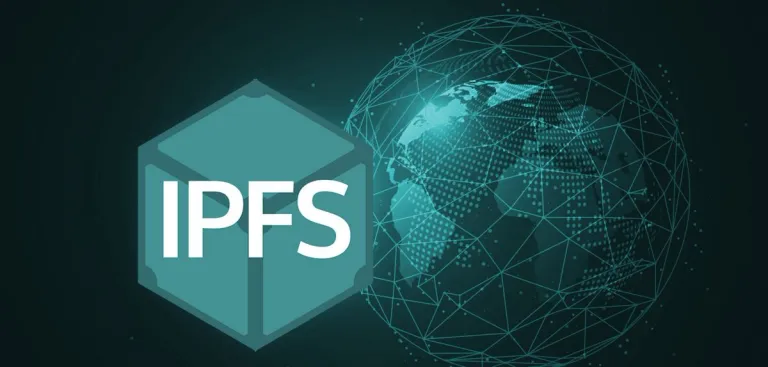Saltando la Verja: Tu vault del tiempo [ES-EN]
Aprende a almacenar tus datos públicos para la posteridad de forma segura.
Learn how to securely store your public data for posterity.

Imagen libre de la colección de geralt-9301 en
Free image from the collection of geralt-9301 in
https://pixabay.com
[ES] // English below
En el post anterior Saltando la Verja: Datos seguros [ES-EN]
Saltando la Verja: Datos seguros [ES-EN] hablamos sobre los distintos tipos de datos y cómo proceder en cada caso. Hoy hablaremos de la forma de almacenar aquellos datos que no son sensibles, o sea pueden clasificarse como públicos, pero que queremos que prevalezcan en el tiempo.
¿Cuántas veces hemos perdido fotos digitales, notas, la receta de la abuela o aquel poema que le dedicamos a la primera novia? Resulta que los discos duros se rompen, los DVDs se rayan y hasta la memoria de lo que una vez hicimos falla. Ante escenarios como este se nos ocurriría copiar aquello que queremos guardar en tantos lugares como se puedan, la redundancia evita la pérdida, si en un lugar se borra o pierde al menos en otros podrá recuperarse. Sería muy engorroso andar con todo aquello que queremos hacer prevalecer bajo el brazo y copiarlo en cuantos lugares se nos ocurran o tengamos disponible cuando ya existen tecnologías que lo hacen por ti y para ti, hablamos de las base de datos distribuidas y de una de sus formas: las blockchains[1].
Pues si, el caso de uso por excelencia de la tecnología blockchain es la creación de un sistema de archivo globalmente distribuido, cada información grabada en la blockchain se replicará en los nodos que almacenan su contenido y validan las operaciones. La importancia de la información que deseamos preservar es proporcional a la importancia de la blockchain en la queremos que nuestros datos se repliquen. Está más que claro que la blockchain que presumiblemente nunca debería desaparecer, al menos si existe la especie humana e internet es #Bitcoin y aunque a muchos le parezca cuestionable por el costo de las transacciones y la saturación de la red que provoca, no creo descabellado almacenar el título de propiedad de un terreno valorado en 10 millones y pagar 1000 en tarifa de transacción[2], siendo su representación la de un token de la vida real RWA[3].
Guardando los datos

Imagen libre tomada de
Free image from
https://blog.desdelinux.net
Tal y como abordamos anteriormente, la importancia de lo que deseemos preservar dictará el medio que utilizaremos para preservarlo. Cualquiera blockchain que admita suministrar información adicional a las transacciones sirve, por lo general el registro de NFT, Ordinals o contenido en texto sirve. Hay casos muy específicos que destacan por su utilidad (además de los caros Ordinals de la red de Bitcoin), note que el mal concepto de la gratuidad deriva en una falta de compromiso, los incentivos son necesarios, garantizan el servicio y su resiliencia:
- Filecoin: Es una blockchain diseñada específicamente para el almacenamiento mediante el sistema de archivos interplanetario IPFS [4]. La criptomoneda nativa #FIL es utilizada como incentivo para que los nodos almacenen el contenido, mientras más grande más debe abonarse, por lo general Filecoin está vinculada con otras blockchain como medio de almacenamiento para NFT u otros, solamente almacenando el hash del archivo como referencia al archivo real almacenado en los nodos de Filecoin.
- BitTorrent: Es posiblemente la solución más antigua de los sistemas de almacenamiento distribuidos peer-to-peer, evolucionó creando su propio token en la red Tron que es utilizado como incentivo para los nodos[5].
- HIVE: Por supuesto no puede faltar, #HIVE es una blockchain de contenido, fundamentalmente texto, aunque sus Dapps enlazan contenidos almacenados en IPFS, esto suceda por ejemplo con los NFT, las imágenes y vídeos de 3speak. Aunque presumiblemente no hay comisiones en la blockchain si hay costos, nótese que la capacidad de acción en la blockchain depende de los recursos gastables que se posean en proporción al valor congelado en forma de HP, además en el caso de los NFT, parte del costo de su creación es utilizado para incentivar a los nodos IPFS que almacenan los datos, de forma similar la red SPK incentiva el almacenamiento y los vídeos e 3speak tengan como beneficiaria a la Dapp para retribuir los costos. No es casual la polémica sobre cómo se manejan las recompensas de la piscina de HIVE, si bien ahora no es un problema crítico con el crecimiento vertiginoso y los nuevos casos de uso el papel de los testigos se vuelve más relevante y más representativa debería ser sus recompensas para garantizar los datos y funcionamiento de la blockchain. En efecto este post, los comentarios que tenga y votos serán almacenados y persistirá mientras exista la blockchain de #HIVE, espero y a muchos le sirvan de utilidad y aporte de conocimientos.
Algunos me han preguntado sobre:¿ por qué no usar directamente IPFS? La respuesta es simple: no hay garantía de que los datos almacenados en IPFS sean persistentes, pues mientras nuestro nodo IPFS esté funcionando los datos se replicarán y parte de los datos de otros serán almacenados en nuestro nodo, pero si alguna vez apagamos nuestro nodo suficiente tiempo no hay garantías de recuperar los datos pues no hay incentivo para otros en replicarlos, las garantías tienen valor y se pagan con dinero o recursos: value for value v4v.
Algunas palabras finales

Imagen libre de la colección de geralt-9301 en
Free image from the collection of webtechexperts-10518280 in
https://pixabay.com
Tenga presente que hemos hablado de que la información a preservar es de carácter inminentemente público, en una blockchain es muy difícil esconder datos, y siempre habrá un mecanismo para verlos. Usted puede protegerlos, por ejemplo cifrándolos pero con suficiente poder de cómputo en un futuro podrían descifrarse en tiempos razonables, la computación cuántica y la IA traerán muchas sorpresas que sobrepasan nuestra imaginación. Le recomendamos que lea The Yin and Yang of Hive, all things that we should know in 6 minutes.
Sobre cómo proteger los datos en la inminente era cuántica hablaremos en nuestra próxima entrega.
Y recuerda:
¡La libertad existe solo cuando pertenece a todos!
Gracias por leernos, esperamos haber agregado algo a su conocimiento o reafirmado el que tiene.
¡Salud!
English
In the previous post Jumping the Fence: Secure Data [EN-ES]
Jumping the Fence: Secure Data [EN-ES] we talked about the different types of data and how to proceed in each case. Today we will talk about the way to store those data that are not sensitive, that is, they can be classified as public, but that we want to prevail over time.
How many times have we lost digital photos, notes, grandma's recipe or that poem we dedicated to the first bride? It turns out that hard drives break, DVDs get scratched and even the memory of what we once did fails. Faced with scenarios like this it would occur to us to copy what we want to save in as many places as possible, redundancy prevents loss, if in one place it is deleted or lost at least in others it can be recovered. It would be very cumbersome to walk around with everything we want to make prevail under our arm and copy it in as many places as we can think of or have available when there are already technologies that do it for you and for you, we are talking about distributed databases and one of their forms: blockchains[1].
Well, yes, the quintessential use case of blockchain technology is the creation of a globally distributed filing system, each information recorded on the blockchain will be replicated in the nodes that store its content and validate the operations. The importance of the information we want to preserve is proportional to the importance of the blockchain in which we want our data to be replicated. It is more than clear that the blockchain that presumably should never disappear, at least if the human species exists and the internet is #Bitcoin and although it seems questionable to many due to the cost of transactions and the saturation of the network that it causes, I do not think it is unreasonable to store the title of a land valued at 10 million and pay 1000 in transaction fee[2], being its representation that of a real-life RWA token[3].
Saving the data

Imagen libre tomada de
Free image from
https://blog.desdelinux.net
As we discussed earlier, the importance of what we want to preserve will dictate the means we will use to preserve it. Any blockchain that supports providing additional information to transactions works, usually the registration of NFTs, Ordinals or text content works. There are very specific cases that stand out for their usefulness (in addition to the expensive Ordinals of the Bitcoin network), note that the bad concept of gratuitousness results in a lack of commitment, incentives are necessary, guarantee the service and its resilience:
- Filecoin: It is a blockchain designed specifically for storage using the IPFS interplanetary file system [4]. The native cryptocurrency #FIL is used as an incentive for the nodes to store the content, the larger the more it must be paid, usually Filecoin is linked with other blockchains as a storage medium for NFTs or others, only storing the hash of the file as a reference to the actual file stored in the Filecoin nodes.
- BitTorrent: It is possibly the oldest solution of peer-to-peer distributed storage systems, it evolved by creating its own token in the Tron network that is used as an incentive for the nodes[5].
- HIVE: Of course it can't be missing, #HIVE is a content blockchain, mainly text, although its Dapps link content stored in IPFS, this happens for example with the NFTs, images and videos of 3speak. Although presumably there are no commissions in the blockchain if there are costs, it should be noted that the capacity for action in the blockchain depends on the spendable resources that are held in proportion to the frozen value in the form of HP, in addition in the case of NFTs, part of the cost of their creation is used to incentivize the IPFS nodes that store the data, similarly the SPK network incentivizes storage and the videos and 3speak have as beneficiary the Dapp to reimburse the costs. The controversy over how the HIVE pool rewards are handled is not accidental, although now it is not a critical problem with the dizzying growth and new use cases the role of witnesses becomes more relevant and more representative should be their rewards to guarantee the data and operation of the blockchain. In fact this post, the comments you have and votes will be stored and will persist as long as the #HIVE blockchain exists, I hope and many will find it useful and contribute knowledge.
Some people have asked me about: why not use IPFS directly? The answer is simple: there is no guarantee that the data stored in IPFS will be persistent, because as long as our IPFS node is working the data will be replicated and part of the data of others will be stored in our node, but if we ever turn off our node long enough there are no guarantees of recovering the data because there is no incentive for others to replicate them, the guarantees have value and are paid with money or resources: value for value v4v.
Some final words

Imagen libre de la colección de geralt-9301 en
Free image from the collection of webtechexperts-10518280 in
https://pixabay.com
Keep in mind that we have talked about that the information to be preserved is of an imminently public nature, in a blockchain it is very difficult to hide data, and there will always be a mechanism to see them. You can protect them, for example by encrypting them but with enough computing power in the future they could be decrypted in reasonable times, quantum computing and AI will bring many surprises that surpass our imagination. We recommend you to read The Yin and Yang of Hive, all things that we should know in 6 minutes.
We will talk about how to protect data in the impending quantum era in our next chapter.
And remember:
Freedom exists only when it belongs to everyone!
Thank you for reading us, we hope we have added something to your knowledge or reaffirmed the one you have.
Cheers!
Gracias!!! 👍
Thank you!!! 👍
H. Huang, J. Lin, B. Zheng, Z. Zheng and J. Bian, "When Blockchain Meets Distributed File Systems: An Overview, Challenges, and Open Issues," in IEEE Access, vol. 8, pp. 50574-50586, 2020, doi: 10.1109/ACCESS.2020.2979881. ↩ ↩
https://www.investopedia.com/what-are-bitcoin-ordinals-7486436 ↩ ↩
https://news.bitcoin.com/bitcoin-ordinals-are-one-of-many-ways-to-represent-real-world-assets-wakweli-co-founder/ ↩ ↩

Congratulations @tuxtify! You have completed the following achievement on the Hive blockchain And have been rewarded with New badge(s)
Your next target is to reach 8000 upvotes.
You can view your badges on your board and compare yourself to others in the Ranking
If you no longer want to receive notifications, reply to this comment with the word
STOPCheck out our last posts: